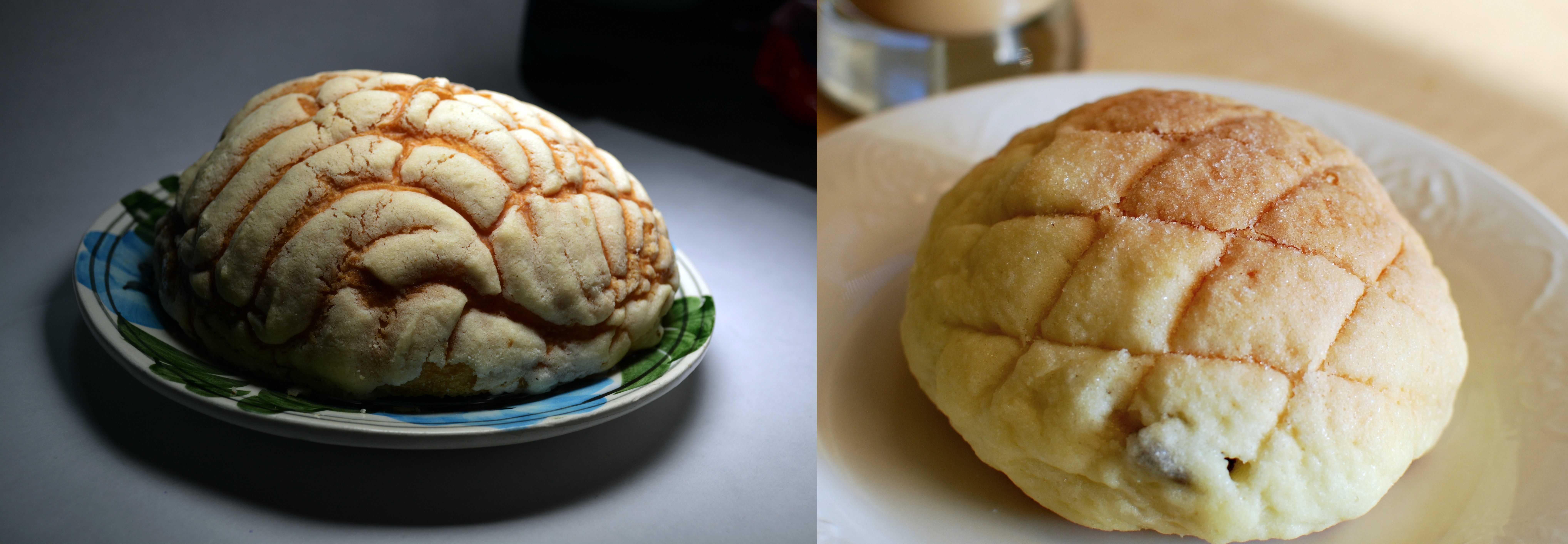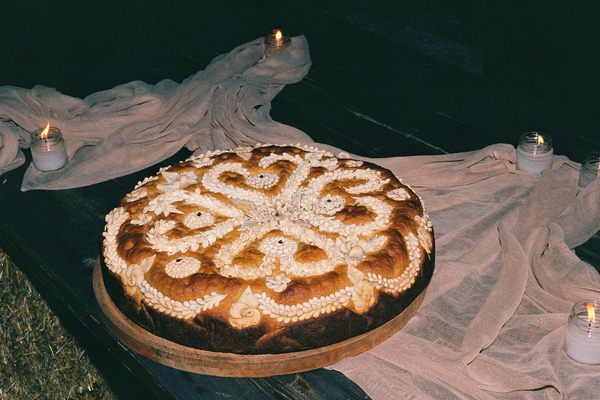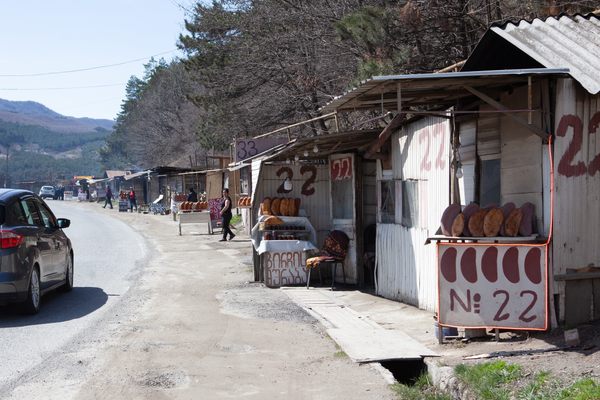Ever Spotted a Doppelgänger Food?
Your favorite dish may have a mysterious twin.
THIS ARTICLE IS ADAPTED FROM THE FEBRUARY 25, 2023, EDITION OF GASTRO OBSCURA’S FAVORITE THINGS NEWSLETTER. YOU CAN SIGN UP HERE.
During my first trip to Oaxaca, Mexico, I snapped a photo of a banana leaf-wrapped rectangle. I immediately sent the photo to my mom, writing, “Look! Mexican zongzi!”
If you had told me that this mole-laced tamal oaxaqueño was a zongzi, one of my favorite Chinese snacks, I would have believed you. A dumpling of savory-sweet sticky rice wrapped and steamed in banana or bamboo leaves, zongzi bears a remarkable similarity to this type of tamal, despite its origins on the other side of the globe.
These leafy lookalikes are far from the world’s only culinary doppelgängers. Give cooks similar resources (say, large leaves, starch, and a little meat) and similar pressures (“How do we turn a sticky, soft dough into an easy-to-eat meal?”) and they may come up with the same solution.
This week, we’re sharing culinary look-alikes that may make you do a double-take before you dig in.
Tamales vs. Zongzi

In California, which has large Mexican and Chinese populations, zongzi are often called “Chinese tamales.” But despite their resemblance, the two delicacies predate any recorded contact between China and the Americas.
In China, zongzi have been a fixture of the springtime Dragon Boat Festival since 276 BC, when, legend has it, mourners of the drowned poet Qu Yuan threw leaf-wrapped rice balls into the Mi Luo river to prevent fish from eating the body.
Meanwhile, the Dresden Codex, a Mayan text from the 11th or 12th century, features corn-husk tamales stuffed with deer, iguana, turkey, and fish, though some scholars speculate that tamales have been around since 8000 BC. Bananas and their broad leaves did not enter the picture until the Spanish brought them to the Americas in the 1500s, but since then, they have been adopted as the wrapper of choice in much of Central America and Southern Mexico.
Today, cooks fill zongzi’s sticky rice with meat, seafood, nuts, sweet bean paste, and fruit, and tamal-makers stuff banana leaves with a rich corn masa and everything from chocolate to herbs to chicken in mole sauce.
The two civilizations that birthed these foods may have been unaware of one another, but it seems that they stumbled upon the same truth: broad leaves are unmatched for wrapping compact, aromatic, and delicious dumplings.
Garbage Plates vs. Loco Mocos

My friend recently traveled to Hawai’i and tried the state’s comfort food, the platter of rice topped with a hamburger patty, gravy, and a fried egg known as Loco Moco. As a native of Rochester, New York, he was thrilled: The dish was very similar to his hometown’s beloved Garbage Plate, a heaping pile of diner starches, such as home fries and macaroni salad, topped with a hamburger patty and covered in a spicy meat sauce.
Diners can add macaroni salad to a Loco Moco, or an egg to a Garbage Plate, making these layered, saucy hamburger plates close to identical. “Did one inspire the other?” he wondered to me.
If the fast-food legends are true, these gut-busters are two independent solutions to the same problem: young eaters with fast metabolisms and empty wallets. In 1949, Richard and Nancy Inouye, owners of Hilo’s Lincoln Grill Restaurant, supposedly came up with the Loco Moco at the behest of members of a local teen football club that needed something inexpensive to fill their bottomless stomachs.
Similarly, Rochester’s Nick Tahou, who holds the trademark for “Garbage Plate,” invented his protein-and-carbohydrate monster after a group of college students asked him for a plate “with all the garbage” on it.
Conchas vs. Melonpan

A few years ago, I felt déjà vu in a Tokyo bakery when I saw a green-tea melonpan, a sweet bun with a cross-hatched cookie crust. Was I not staring at a concha, the iconic Latin American sweet bread with a wavy, ridged, seashell-like topping?
As it turns out, they have distinct origin stories. No one knows who baked the first concha, a type of pan dulce (sweet bread) developed over centuries by Mexican bakers of Indigenous and Spanish heritage who used European bread-making techniques to come up with something wholly Mexican. Since then, the concha has spread throughout Latin America.
In Japan, melonpan has at least two creation myths: one attributes its invention to an Armenian baker in Tokyo in the early 1900s, and another to a Kobe bakery during the same time period.
Although it is possible that the concha came to Asia from Mexico, no evidence of this exists, and some historians think that the buns are the result of two different cultures adapting Iberian bread to local tastes. Culinary scholars conjecture that in their efforts to win over corn- and rice-loving people, the Spanish and Portuguese introduced similar sugary bread recipes on different continents. Eventually, creative bakers on opposite sides of the Pacific each came up with the idea of adding a sweet crisp crust to a challah-like bun.
Though the two treats are strikingly similar, they bear one notable difference: their names. In Japan, the bread’s criss-crossed surface is said to resemble a cantaloupe rind, hence the word “melonpan.” In Latin America, the concha’s crust is etched with gentle curves, earning it the name “seashell.”
Gastro Obscura covers the world’s most wondrous food and drink.
Sign up for our regular newsletter.



























Follow us on Twitter to get the latest on the world's hidden wonders.
Like us on Facebook to get the latest on the world's hidden wonders.
Follow us on Twitter Like us on Facebook